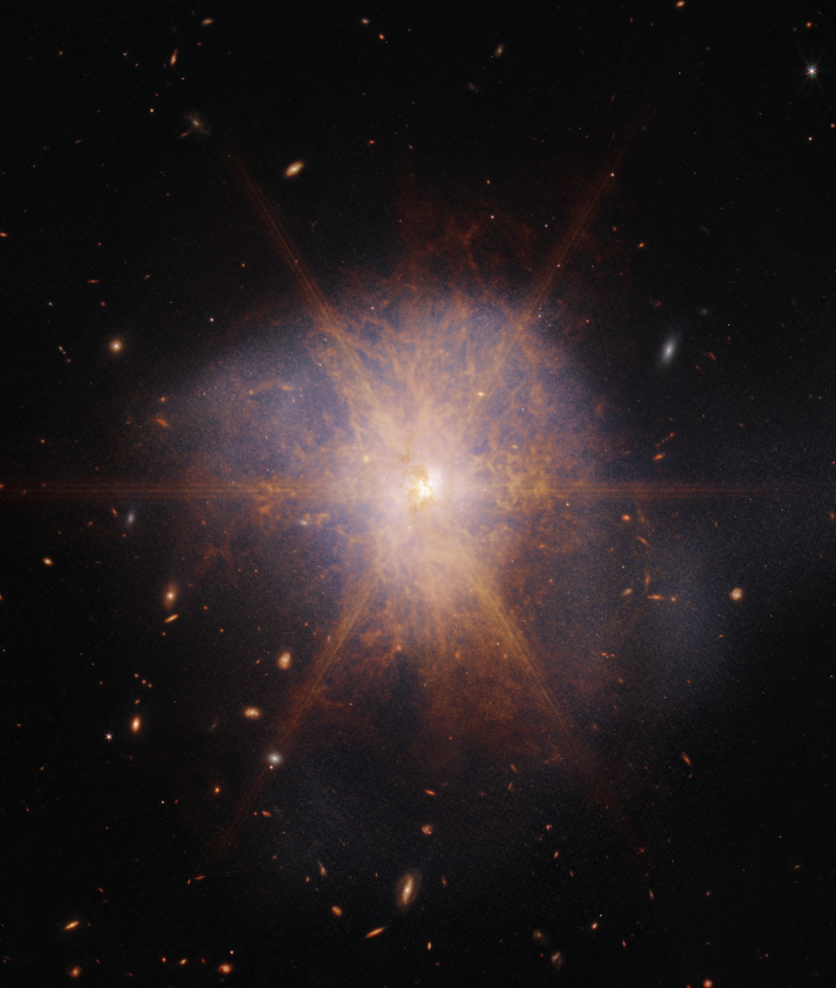Galaxy mergers are a common thing in the universe, but witnessing them in all their glory is truly otherworldly. NASA's extremely powerful James Webb Space Telescope proves this after capturing a brilliant smash-up of two spiral galaxies, which is named Arp 220.

Lighthouse in the Sea of Galaxies
Arp 220 is a target for Webb because it glows brightest in infrared light and shines like a lighthouse in the sea of galaxies.
The Serpent constellation contains this ultra-luminous infrared galaxy (ULIRG), which is also 250 million light-years away. It is the closest and brightest of the three galactic mergers adjacent to Earth.
About 700 million years ago, the two spiral galaxies that make up Arp 220 started to collide, causing a massive explosion of star creation.
Now, a dense, dusty region that is around 5,000 light-years across, or roughly 5% of the Milky Way's width, is now home to about 200 massive star clusters, according to NASA.
About 100 supernova remnants were previously discovered in a region of fewer than 500 light-years, while the parent galaxies' centers were discovered 1,200 light-years away by NASA's Hubble Space Telescope.
Each of the cores contains a star-forming ring that rotates and emits brilliant infrared light, causing diffraction spikes to dominate Webb's view.
Webb captured the faint tidal tails of material drawn off by gravity from the merging galaxies, providing evidence of the galactic dance occurring on the outskirts of this merger. These tidal tails are represented in blue. Additionally, organic material appears in reddish-orange streams and filaments across Arp 220.
The telescope viewed Arp 220 with its Near-Infrared Camera (NIRCam) and Mid-Infrared Instrument (MIRI).
Read Also : NASA's James Webb Space Telescope Unveils Previously Unknown Details of Supernova Remnants
A Thing of Beauty
Webb's ability to observe the infrared light emitted by Arp 220 provides crucial information about the galaxy's star formation, black holes, and other energetic processes that are hidden from visible-light observations.
Arp 220 is an essential target for scientists studying the early universe and galaxy evolution. Webb's ability to study the galaxy's infrared light is crucial to understanding the processes that govern the formation and evolution of galaxies.
Galaxy mergers are always a thing of beauty that fascinates astronomers. These mergers can take millions or even billions of years for the process to complete. During this time, stars and gas clouds from each galaxy interact and eventually merge, forming a new, larger galaxy.
They can also create new and unique shapes of galaxies, such as elliptical or irregular shapes, that are different from the original spiral or barred shapes.
The Milky Way galaxy is expected to collide with the Andromeda galaxy in about 4 billion years. This collision is expected to take billions of years to complete and will result in a new, larger galaxy.
The collision of two galaxies can cause gravitational disturbances that lead to the formation of bridges or tidal tails of gas and stars between the galaxies.
Related Article : NASA's James Webb Space Telescope Catches an 'Asteroid Photobomber' Roughly the Size of Rome's Colosseum

![Apple Watch Series 10 [GPS 42mm]](https://d.techtimes.com/en/full/453899/apple-watch-series-10-gps-42mm.jpg?w=184&h=103&f=9fb3c2ea2db928c663d1d2eadbcb3e52)



